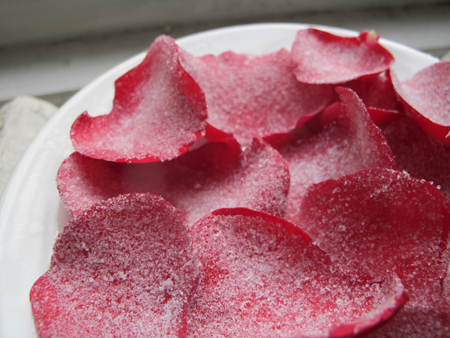Throughout history, flowers have been part of our diet, with Chinese chefs experimenting with edible flowers as far back as 3,000 B.C.E, and the Romans incorporating violets, roses, and lavender in their food and sauces.
In this post, we'll embark on a journey through the world of edible flowers, exploring their diverse uses in both sweet and savoury creations. Get ready to embrace the beauty of these blooms and unlock their culinary potential!
 A Feast for the Eyes:
A Feast for the Eyes:
Edible flowers are not just a treat for the palate, they also create a feast for the eyes. Picture a simple salad adorned with pansies, marigolds, and nasturtiums, or a dessert sprinkled with crystallised rose and violet petals. The colours and textures of edible flowers can add an artistic flair to any dish, making it a delightful experience before the first bite.
Culinary Uses of Edible Flowers:
1. Salads: Add a splash of colour and a subtle peppery or tangy flavour to your salads by incorporating flowers like nasturtiums, borage, and rocket (arugula) blossoms.
2. Desserts: Turn your cakes, cupcakes, and desserts into stunning masterpieces by decorating them with edible flowers such as violets, pansies, lavender, or rose petals.
3. Infusions: Create floral-infused syrups, teas, and vinaigrettes by steeping flowers like rose, chamomile, hibiscus, or elderflower in hot liquids.
4. Soups and Stews: Give your soups and stews a unique twist by garnishing them with chive blossoms, marigold, or squash blossoms.
5. Herb Substitutes: Replace traditional herbs with edible flowers like dill flowers, chive blossoms, and basil blossoms for an unexpected flavour profile.
Safety First: Know Your Flowers:
While edible flowers can elevate culinary experiences, it's essential to exercise caution and ensure you're using the right blooms. Not all flowers are safe to eat, and some are toxic.
Always buy edible flowers from reputable suppliers or grow them yourself without pesticides.
Familiarise yourself with the edible varieties and avoid buying flowers from florists or garden centres, as they may have been treated with chemicals not safe for consumption.
Preparing Edible Flowers:
flowers are best when picked fresh from the garden, ideally early in the morning to ensure the best flavour. Store them in the fridge in a container and use them within a few days. Gently wash and dry them by dipping them in a bowl of water and gently shaking to remove any hidden bugs.
Pat dry with kitchen paper for larger flowers, remove the heel at the base of the petal (it can be bitter) and the stamens, pistil, and calyx. Some flowers, like pansies, can be eaten whole.
A Symphony of Flavours:
Each edible flower boasts its unique flavour profile, ranging from subtly sweet to pleasantly bitter or even spicy. Experiment with different combinations to create harmonious flavour symphonies. When traveling, consult locals about edible flowers, and always try one first, waiting a day before using more.
Quick guide to edible flowers
Nasturtium
Flowers have a peppery flavour, and leaves are also flavourful, citrusy and peppery. add in salads, pesto or other savoury dishes, young seed pods can be harvested, pickled and used as substitute for capers.
Saffron
The stigma of saffron flower is collected to make the most expensive spice in the world. Saffron is found in savoury and sweet dishes.
Sunflower
Typically consumed as seeds. Flowers are also edible, buds can be steamed and eaten like an artichoke.
Lavender
Sweet and herbal. Buds contains essential oil and used to infuse flavour and scent, combined in sugar or honey to be used in baking or for beverages.
Violets
Add young flowers to salads or in stuffing for poultry or fish. Crystallise as a Garnish on cakes and pastries.
Hibiscus
Hibiscus is most often dried for tea & other beverages. The fresh petals can be candied or added to salads.
Courgette
Sometimes referred to as squash blossoms. typically picked when they are slightly open. Can be stuffed or fried..
Lilac
Lilacs make a great edible garnish when candied, with a lemon flavour. Can also be infused in lemonade.
Dandelions
Considered, a weed but both flowers and leaves are edible. Use the young leaves in salads or steam. While the mature flower is bitter, the buds are sweet.
Elder Flower
Commonly used to make elderflower cordial syrups and teas with a sweet honey scent . Dont Use the stems, they are poisonous.
Rose
The petals, fresh or dried can be candied or used in teas. Rosewater made from the essential oil of the petals is a dessert ingredient.
Conclusion:
Edible flowers are nature's gift to the culinary world, quickly transforming dishes into works of art while tantalising the senses.
As chefs, exploring the diverse uses of edible flowers allows us to unleash our creativity and take our culinary creations to new heights.
Remember to embrace the beauty and uniqueness of each bloom while exercising caution to ensure a safe and delightful dining experience for yourself and your guests. Let the edible flower journey begin!
